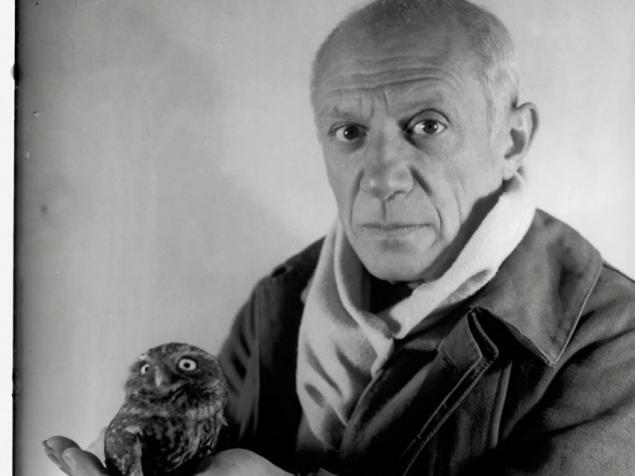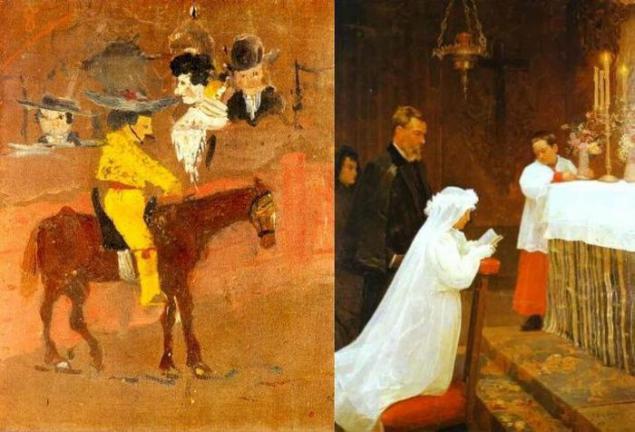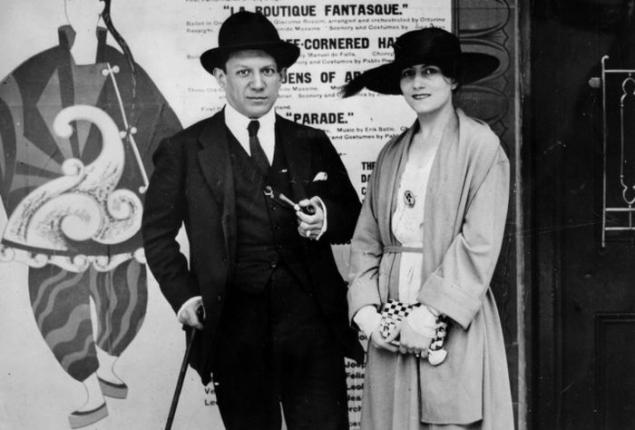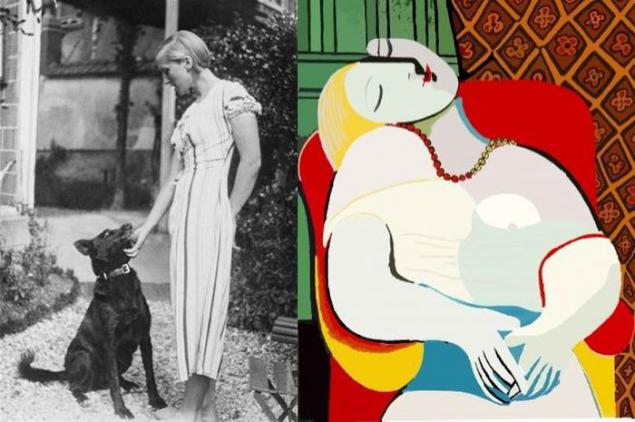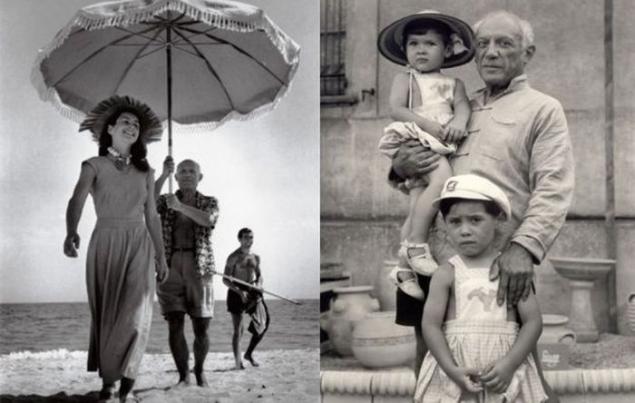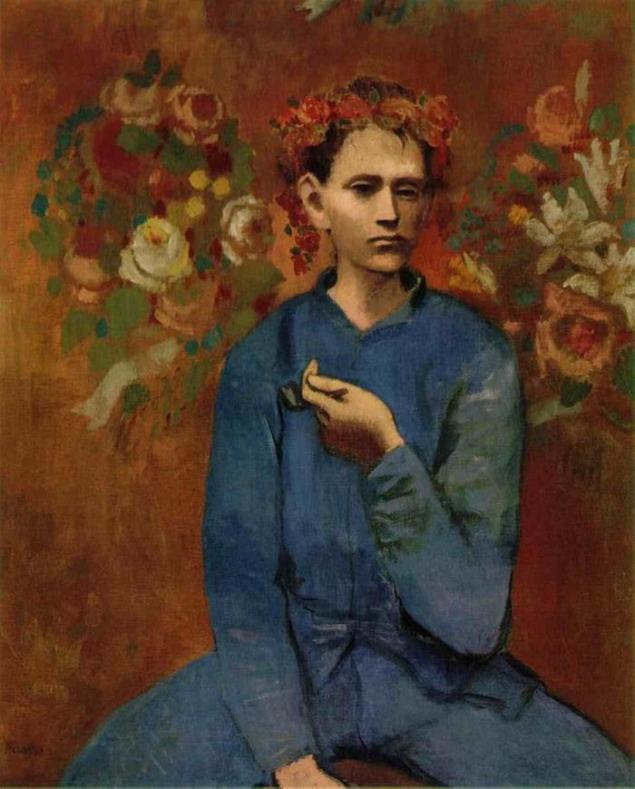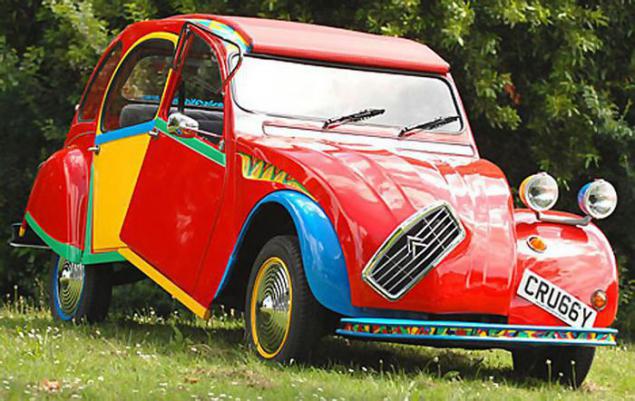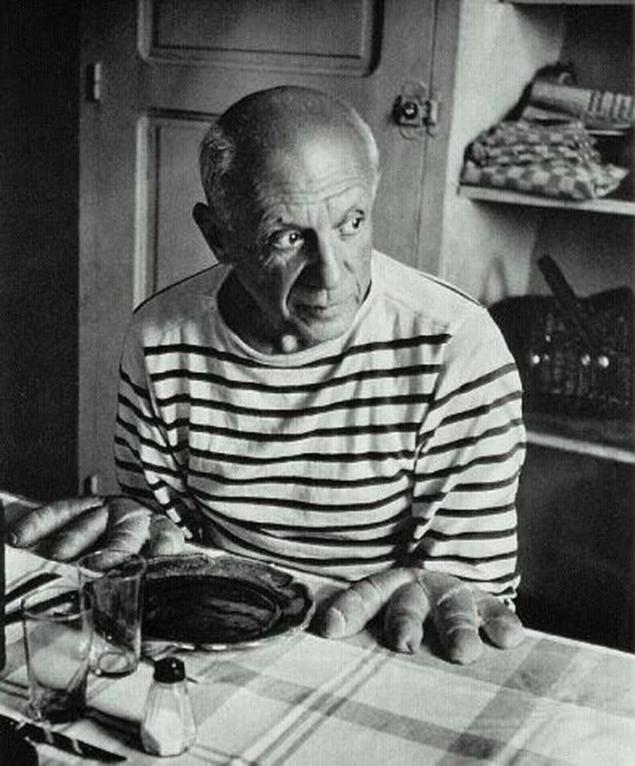When it comes to art everyone has a different opinion. Modern art particularly sets people apart as some question whether it is art at all while others marvel at its splendor. However, there are a number of artists that are so famous throughout history that they are loved by all. Michelangelo, Da Vinci, Van Gogh, and Picasso are probably the most renowned artists of all time. Picasso in particular stands out as he covered so many different styles during his time as an artist. Today we take a closer look at his life.
Picasso was born ready to be an artist. He was born in October 1881 in Spain and his father was an artist. This meant that it came as no surprise when the first word uttered by little Pablo was ‘pencil’ in Spanish (lapis). What did come as a surprise to those who saw Pablo Picasso grow was how quickly he became incredible. At the age of nine, he completed his first painting called ‘Le Picador’ a work that already shows his potential. Yet by the age of thirteen, he had become a master. His father saw his work and decided to quit painting himself – he saw that if his thirteen-year-old son was already better than him, then he had nothing to offer the world in painting.
It was at this age that Picasso’s life really started to change. He was accepted into the school of Fine Arts. The entrance exam typically takes one month to complete yet he completed all requirements in a week. He held his first exhibition the same year and soon word started to spread about the 13-year-old wonder.
Many people criticize Picasso’s famous works for being random shapes that don’t look like their subject. What they don’t realize is that Picasso started out with paintings that were so perfect and so beautiful he started to invent his own new approach to art. At 15 he completed a portrait called “First Communion” and to any viewer, it is a splendid masterpiece. Clearly, as he got older he would have to find new ways to be creative. This led him to create cubism a new perspective in the art world which reduced everything to geometric shapes. Yet to complete this work he first needed to master other art forms.
Picasso was an artist in the truest sense. He was a painter, a sculptor, a poet, a playwright, a stage designer, a ceramicist, and a writer. He was also an incredibly eccentric character. He was a known communist and would carry a gun in his pocket that was loaded with blanks. If anyone insulted him, the artist Cezanne who he admired, or were just being boring he would shoot them with the blanks.
Picasso is mostly known for creating the world of cubism but he also holds a number of records. At the time of his death, Picasso was the richest painter that ever lived. Many people portray him as a struggling artist but clearly, the opposite was true. He completed an incredible amount of works during his life. He holds the record for the most works completed by a single artist. In his lifetime he made 150,000 pieces of art including 14,000 paintings, 100,000 prints, 34,000 book illustrations, and 300 sculptures. We are fortunate to have had the work of Picasso in our lives. When he was born he was so small that the nurse thought he was stillborn. She left him to look after his mother. He would have died except a relative noticed that he was moving and saved him. In his death his final words were “Drink to me, drink to my health. You know I can’t drink anymore”.
On 25 October 1881 a little boy was born in Malaga, Spain. It was a difficult birth and to help him breathe, cigar smoke was blown into his nose! But despite being the youngest ever smoker, this baby grew up to be one of the 20th century’s greatest painters – Pablo Picasso.
Picasso showed his truly exceptional talent from a very young age. His first word was lapiz (Spanish for pencil) and he learned to draw before he could talk. He was the only son in the family and very good-looking, so he was thoroughly spoilt. He hated school and often refused to go unless his doting parents allowed him to take one of his father’s pet pigeons with him!
Apart from pigeons, his great love was art, and when in 1891 his father, who was an amateur artist, got a job as a drawing teacher at a college, Pablo went with him to the college. He often watched his father paint and sometimes was allowed to help. One evening his father was painting a picture of their pigeons when he had to leave the room. He returned to find that Pablo had completed the picture, and it was so amazingly beautiful and lifelike that he gave his son his own palette and brushes and never painted again. Pablo was just 13.
From the onwards there was no stopping him. Many people realized that he was a genius but he disappointed those who wanted him to become a traditional painter. He was always breaking the rules of artistic tradition and shocked the public with his strange and powerful pictures. He is probably best known for his “Cubist” pictures, which used only simple geometric shapes. His paintings of people were often made up of triangles and squares with their features in the wrong place. His work changed our ideas about art, and to millions of people modern art means the work of Picasso. Guernica, which he painted in 1937, records the bombing of that little Basque town during the Spanish Civil War, and is undisputedly one of the masterpieces of modern painting.
Picasso created over 6,000 paintings, drawings and sculptures. Today a “Picasso” costs several million pounds. Once, when the French Minister of Culture was visiting Picasso, the artist accidentally spilt some paint on the Minister’s trousers. Picasso apologized and wanted to pay for them to be cleaned, but the Minister said, “Non! Please, Monsieur Picasso, just sign my trousers!”
Picasso died of heart failure during an attack of influenza in 1973.
Прочитайте текст и установите правильную последовательность событий.
FORM 8
READING COMPREHENSION
THE PAINTER
On the 25 October, 1881 a little boy was born in Malaga, Spain. It was a difficult birth and to help him breathe, cigar smoke was blown into his nose! But despite being the youngest ever smoker, this baby grew up to be one of the 20th century’s greatest painters — Pablo Picasso.
Picasso showed his truly exceptional talent from a very young age. His first word was lapiz (Spanish for pencil) and he learned to draw before he could talk. He was the only son in the family and very good-looking, so he was thoroughly spoilt. He hated school and often refused to go unless his doting parents allowed him to take one of his father’s pet pigeons with him!
Apart from pigeons, his great love was art and when in 1891 his father, who was an amateur artist, got a job as a drawing teacher at a college, Pablo went with him to the college. He often watched his father paint and sometimes was allowed to help. One evening his father was painting a picture of their pigeons when he had to leave the room. He returned to find that Pablo had completed the picture, and it was so amazingly beautiful and lifelike that he gave his son his own palette and brushes and never painted again. Pablo was just 13.
From then onwards there was no stopping him. Many people realized that he was a genius but he disappointed those who wanted him to become a traditional painter. He was always breaking the rules of artistic tradition and shocked the public with his strange and powerful pictures. He is probably best known for his «Cubist» pictures, which used only simple geometric shapes. His paintings of people were often made up of triangles and squares with their features in the wrong place. His work changed our ideas about art, and to millions of people modern art means the work of Picasso. Guernica, which he painted in 1937, records the bombing of that little Basque town during the Spanish Civil War, and is undisputedly one of the masterpieces of modern painting.
Picasso created over 6 000 paintings, drawings and sculptures. Today a «Picasso» costs several million pounds. Once, when the French Minister of Culture was visiting Picasso, the artist accidentally spilt some paint on the Minister’s trousers. Picasso apologized and wanted to pay for them to be cleaned, but the Minister said, «Non! Please, Monsieur Picasso, just sign my trousers!»
Picasso died of heart failure during an attack of influenza in 1973.
Task 1
Mark + if the statement is true, — if it is false.
1. A little boy was born on 25 October 1884.
2. It was not a difficult birth.
3. Pablo learned to draw before he could talk.
4. He liked school.
5. His great love was art and pigeons.
6. His father got a job as a drawing teacher in 1891.
7. Pablo wasn’t allowed to help his father to paint the pictures.
8. The picture which Pablo completed instead of his father was not so beautiful
and lifelike as his father’s.
9. Picasso is best known for his «Cubist» pictures.
10. Picasso died of pneumonia in 1973.
Task 2
Choose the correct letter A, B, or C.
11. Where was Pablo Picasso born?
A.In Spain.
B.In Italy.
С. In France.
12.Why was it a difficult birth?
A.There were no doctors beside.
B.The mother died.
С. The baby couldn’t breathe.
13.Why was the boy thoroughly spoilt in his childhood?
A.Because he was very nervous.
B.Because he was the only son in the family.
С. Because the child had a week health.
14.Which people played a part in his career?
A.His father.
B.His mother.
С. His friends.
15.Which of the following numbers or dates relate to this person?
A.1882
B.79
С.13
16.What did Picasso always shock the public with?
A.He was not breaking the rules of artistic tradition.
B.He was painting strange and powerful pictures.
C.Не was only painting people.
17. What characterizes most of his pictures?
A.Realism.
B.Simple geometric shapes.
C.Soft colours.
18. What happened when the French Minister of Culture was visiting Picasso?
A.The artist spilt some paint on the Minister’s trousers.
B.The Minister paid one million pounds for his picture.
С The artist presented a picture to him.
19.What did the Minister ask?
A.To sign the trousers.
B.To sell the picture.
C.То clean the trousers.
20.What does the number 6.000 refer to?
A.To the price of one of Picasso’s pictures.
B.To the total number of his paintings drawings and sculptures.
C.То the number of sculptures Picasso created.
WRITING COMPREHENSION
-
How do you help out around the house? Is there anything special you have to do or do your parents do everything? Do you mind doing this work? Will you continue this once you have your own apartment?
-
Every season offers us many things to do both inside and outside. Which season is your favorite and what are some things you like to do during that season?
-
Who is your favorite singer and why? What does this person’s voice sound like to you? What kind of music does he or she tend to sing? What does he or she sing about and how do you relate to this music?
SPEAKING COMPREHENSION
-
Who is the person you admire most? Give reasons for your answer.
-
Some people think it is better to live in the village than in a big city. Do you agree? Why or why not?
-
Imagine you are interviewing one of your favorite English or American writers. What would you like to ask him/ her about? What interests you most in his/her literary work?
FORM 9
COCA-COLA
READING COMPREHENSION
In 1886 John Pemberton, a druggist in Atlanta, Georgia, made a brown syrup by mixing coca leaves and cola nuts. Pemberton sold the syrup in his drugstore as a medicine to cure all kinds of problems. Pemberton called his al purpose medicine “Coca-Cola”. When few people bought Coca-Cola, Pemberton sold the recipe to another druggist, Asa Candler. Candler decided to sell Coca-Cola as a soda-fountain drink instead of a medicine. At soda fountains in drugstores, the syrup was mixed with soda water to make the drink Coca- Cola. Candler advertised a lot and sold his syrup to many drugstores. Soon everyone was going to soda fountains and asking for Coca-Cola. Candler saw no reason for putting Coca-Cola into bottles. But two businessmen thought his would be a good idea. They got permission from Candler, and before long they became millionaires. As of1903, coca leaves were no longer used in Coca-Cola. The exact ingredients used and their quantities are not known — the Coca-Cola company keeps its recipe a secret. World War I helped to make Coca-Cola popular outside the United States. The Coca-Cola Company sent free bottles of the drink to U.S. soldiers fighting in Europe. Coca-Cola became very popular with the soldiers — so popular that the U.S. Army asked the company to start ten factories in Europe. After the war, these factories continued to make Coca-Cola. Today, there are Coca-Cola factories around the world.
Т.: Answer the questions from the text.
-
A person who sells medicines is a …
-
Druggist c) Businessman
-
Millionaire d) Addict
-
… is a sweet, heavy liquid that tastes good.
a)Syrup c)Soda
b)Cola d)Milk
3) Pemberton sold Coca-Cola to make people well and … their problems.
a) keep c) mix
b) find out about d) cure
4) A medicine that cures many things is …
-
popular c) free
-
all-purpose d) aspirin
5) The different things that are mixed together to make Coca-Cola are its …
-
ingredients c) sodas
-
Ideas d) liquids
6) The …of ingredients is the amount you put in.
-
Factory c) permission
-
Color d) quantity
7) Not many people knew about Pemberton’s syrup … bought it.
-
a lot c) all
-
few d) most

-
ingredients c) recipe
-
soda fountain d) bottle
9) People find out about things to buy by looking at…
-
Recipes c) articles
-
Advertisements d) the monitor
10) People drink soda from a bottle instead of going to a soda fountain store to drink it because…
-
it tastes better c) it’s the law
-
they collect bottles d) it’s easier to do.
WRITING COMPREHENSION
-
Comment on the following proverb: “Appearances are deceitful».
-
Who or what helps you study most: teachers, parents, friends, books, television? Explain your choice. Write about the role of each.
-
Computers are becoming more and more important in today’s world. How do you fell people are using computers? Do you feel we use them enough, or too much? Are there any negative effects to becoming more and more dependent on computers?
SPEAKING COMPREHENSION
-
If you had three wishes, what would they be and why? Would they be beneficial to you or to other people? Would it be easy or hard for you to chose just three? Who is granting you the wishes?
-
You have recently moved into a new flat. Describe your housewarming party.
-
You are talking to the Minister of Education. Tell him about the problems your school has and ask what is planned for its improvement.
FORM 10
READING COMPREHENSION
THE SHOEMAKER’S SHOP
One afternoon many years ago, George Cox robbed Barcley’s Bank. He stole over 50,000 pounds. But unfortunately, when he came out of the bank, the police were waiting for him. George was arrested and sentenced to twenty-five years in prison.
Years passed and finally the day arrived when George was a free man again. At the door of the prison he was given back his old clothes, a small suitcase and his wallet.
He walked to the railway station and caught a train back to the small town he was born and brought up. He chose it for his permanent residence.
After George had got off the train, he came out of the station and looked around him. How everything had changed! There was too much traffic now. What used to be a quiet little street was now an enormous supermarket, whore there used to be a park, there was an ugly car park. George couldn’t believe his eyes. All these changes made him feel a bit depressed so he decided to have a cup of tea,
He looked for an old corner cafe where he used to meet his friends when he was a teenager. But of course it was gone, In its place now stood McDonald’s, which George had never seen before in his life. He sat down on the hard plastic seat and waited for the waitress to come and Lake his order. Nobody came, Ten minutes later he realized that he had to go and ask for what he wanted. «A cup of tea, please», he said. «We don’t make tea, only coffee», answered the black girl behind the counter. Everything had changed, it seemed. There was nothing here for him any more,
But as he opened his wallet to pay for the cup of coffee he didn’t really want, he discovered an old yellow ticket. He
looked at it closely. It was a ticket for a pair of shoes which he had taken to the shoe repairer on the day before the robbery — twenty-five years ago. And of course he hadn’t been able to go back for them.
George left the McDonald’s and walked up High Street, past what used to be the cinema but which was now a Leisure Center (whatever that meant). Then he turned right down a narrow street, and there on the corner was a small shoemaker’s shop. The same little dirty shop was still there, after all these years. George looked in the window and couldn’t believe his eyes, it was the same shoemaker — much older now, of course, with a long white beard. George went into the shop. He suddenly felt very embarrassed when he showed the shoemaker the old yellow ticket.
«Excuse me», he said. «You won’t remember me. I’ve been away from this town for twenty-five years, but. on the day before I left, I gave you a pair of shoes to repair and you gave me this ticket. 1 know it’s ridiculous, after all these years, but I wonder if…»
The shoemaker took the old yellow ticket, looked at it closely and then disappeared to the back of the shop. A few minutes later he came back.
«Was it a pair of black shoes?» he asked.
«Yes», said George excitedly.
«A pair of black shoes, size eight and a half?»
«Yes», said George.
«Needed any heels?» asked the shoemaker.
«Yes, that’s right! You mean you’ve still got them?»
«Oh, yes. I’ve still got them», said the shoemaker. «They’ll be ready on Friday».
-
Mark + if the statement is true, — if it is false.
1. The police were waiting for George Cox when he tried to break into the shop.
2.But for the police George could have stolen over 50,000 pounds.
3There used to be much traffic in the town where George grew up.
4.George was shocked and upset by the sight of his street.
5. A few changes took place in his native town during his absence.
6. George sat down on a hard plastic seat in the old corner cafe.
7. On the day of his arrival in his native town George took his shoes to the shoe repairer.
8. After all those years the little shoemaker’s shop was still there.
9. A receipt for a pair of shoes was preserved in George’s wallet in prison.
10. The shoemaker said that George’s shoes were ready.
-
Circle the letter А, В, С which marks the best answer.
1. When did the police arrest George Cox?
A. When he entered the bank.
B. When he was stealing money.
C. When he left the bank.
2. How much did George Cox steal in the long run?
A. He stole 50,000 pounds.
C. He stole over 50,000 pounds.
D. He stole nothing.
3. What did George decide to do when he was free from prison?
A. To visit his parents.
A. To visit his parents.
B. To have a look at the house where he used to live.
C. To stay in his native town.
4. What did George do first when he arrived at the street?
A. He went to the corner cafe to have a cup of tea.
B. He went to McDonald’s to have a cup of tea.
C. He went to the supermarket to buy a pair of shoes.
5. Changes in his street impressed George, didn’t they?
A. Yes, he was.
B. Yes, they did.
C. No, they didn’t.
6. What was George’s reaction to the changes in his native town?
A. He was impressed.
B. He was depressed.
C. He was surprised.
7. What did he find in his wallet?
A. F pair of shoes.
B. Some money to pay for the tea.
C. A yellow ticket.
8. Where was the little shoemaker’s shop?
A. Near a Leisure Centre.
B. Near McDonald’s.
C. In a narrow street.
9. The shoemaker was the same man but much older, wasn’t he?
A. Yes, it was.
B. No, he wasn’t.
C. Yes, he was.
10. The shoemaker had a poor memory, didn’t he?
A. Yes, he did.
B. Yes, he had.
C. No, he didn’t.
WRITING COMPREHENSION
-
Time travel is an idea that fascinates many people. Imagine that you could travel back in time to witness one event or meet one person. Who would you like to meet, or what would you like to see? What effect would this experience have on you? Explain in detail why you would choose this event or person.
-
Many video games, television programs, films and song lyrics are filled with depictions of violent criminal activities. What effect do you think this has on the people to watch, play, or listen to these forms of media?
-
Do you think society is becoming more violent because of them? What would you suggest be done about this problem?
SPEAKING COMPREHENSION
-
Your friend wants to get married. You think he/she is too young. Tell him/her what you think he/she ought to do. Do you think it is better to marry for money than for love? Compare men and women.
-
Tell us about your dream house.
-
Man’s greatest invitation as you see it.
11 FORM
READING COMPREHENSION
BABYLONIA
The people of Babylonia were rich and powerful. They were also happy. They loved each other and they enjoyed working together. But one thing was lacking. Men had only the earth to enjoy. God had kept heaven for himself and his angels.
The King of Babylonia decided that his people should have Heaven as well as Earth. So he ordered them to build a great tall tower. Six hundred thousand men began making bricks and mixing mortar and piling up a building higher and higher. All day every day men carried bricks and mortar up a stairway on the east side of the tower. Then they walked down another stairway on the west to get more loads. This went on for forty-two years until the Tower was twenty-seven miles high. It was so high that it took a man a whole to carry bricks from the ground to the top.
Now the Tower had risen nearly to Heaven, and God saw that he would have to do something to keep the invaders out. Perhaps if he made it hard for people to co-operate, they would not be able to finish the Tower. To carry out his plan God sent seventy angels down to Earth. The angels had orders: first to take away the one language everybody understood, then to split the people up into groups, with each group speaking a new tongue of its own. In no time the men who made bricks couldn’t talk to the men who carried them. And the men who carried bricks couldn’t say an understandable word to the men who laid the bricks. Everything was a mess, and everybody blamed everybody else for not understanding. People no longer talked about the Tower of Heaven. Instead they talked about the Tower of Babel, which meant the Tower of Confusion. Work came to a dead stop. The builders went away carrying their new languages with them. That is how it happens that different tongues are spoken in different parts of the world.
1. Mark + if the statement is true, — if it is false.
-
People of Babylonia were rich and powerful but not happy.
-
They had the Earth and the Heaven to enjoy.
-
The King of Babylonia decided that his people should have Heaven, as well as Earth.
-
Five hundred thousand men began building the Tower.
-
They carried load up a stairway on the east side of the tower and walked down another stairway on the west.
-
They went on building for forty-four years.
-
The Tower had risen nearly to Heaven.
-
God decided to let the invaders to come into the Heaven.
-
The angels had the order to split the people up into groups, with each group speaking a different language.
-
In no time the men who were building the Tower couldn’t understand each other.
2. Circle the correct letter A, B, or C.
-
What were the people of Babylonia lacking?
-
They had no heave for themselves.
-
They were not reach and powerful.
-
There was no love between them.
-
What did the King order his people to do?
-
To ask God to come to the earth.
-
To build a great tall tower.
-
To work together.
-
How high was the tower?
-
7 miles high.
-
70 miles high.
-
27 miles high.
-
How long did it take a man to carry bricks from the ground to the top?
-
A year.
-
20 years.
-
42 years.
-
What did God do to keep the invaders out?
-
He ruined the Tower.
-
He decided to make it hard for people to co-operate.
-
He made the people poor.
-
What orders did the angels have?
-
To take away the one language the people understand.
-
To help the people to build the Tower.
-
To kill the King of Babylonia.
-
What made it hard for people to co-operate?
-
Speaking different languages.
-
Splitting into small groups.
-
Hard work.
-
Why did the people stop talking about the Tower of Heaven?
-
Because the people couldn’t understand each other.
-
Because the Tower was ruined.
-
Because there were no bricks left to finish the Tower.
-
What did the people talk about?
-
About the Tower of Babel.
-
About the Tower of confusion.
-
About the new languages.
-
What did the people do when everything was a mess?
-
They went away carrying their new languages with them.
-
They continued all the same.
-
They blamed the King for the confusion.
WRITING COMPREHENSION
-
What are most serious problems of the present day world which worry millions of people everywhere? How do you imagine the future of your planet? What may happen to the world in the next ten years?
-
You will graduate in about 6 months. What are your future plans? What scares you the most and what makes you the most excited about leaving school. What were the best and worst things about being at your present school? Tell why. What will you miss the most? Why?
-
The ideal of romantic love is historic idea. Loving friends always forgive each other. A man’s wife should be his sole interest in life?
SPEAKING COMPREHENSION
-
Agree or disagree: examinations are unnecessary.
-
What is more important: fame and money, or goodness of character. Explain why.
-
Agree or disagree: a universal language is possible.
We all know the famous artist and one of the most peculiar genius of his time Pablo Picasso. Master’s career has had an enormous influence on the development of the art of the twentieth and twenty-first centuries. In honor of his 132 birthday suggest you look at a rather interesting facts from the life of a genius.
Newborn Picasso saved smoke from cigars
The birth was difficult, and the child was born so weak that the midwife finds him stillborn. She left it on the table and went to tell her mother the bad news. Rescued the child luck — his uncle, Don Salvador, smoked cigars, and saw the baby lying on the table, let the smoke in his face. Newborn grimaced and went into mourning. If it were not smoking, Pablo Picasso could not be born as a famous artist.
Left: Pablo Picasso, 1886, right: Pablo Picasso with his sister Lola, 1889
The first word was «pencil»
Little Pablo learned to draw before speaking, and his first word was «pencil» (piz, short for lapiz, which in Spanish means «pencil»). When he was 7, his father, an artist and professor of art, taught him drawing. Soon he saw that his son surpasses it in this art, and vowed to give up painting. Entrance exams to art school in Barcelona Picasso passed in one day, while all the others passed their month.
Left: Pablo Picasso at the age of 15, in 1896, right: archival photo of Picasso at the age of 23 years, in 1904
The first drawings
At 9 years old Picasso painted his first finished drawing — «Picador» (Le picador), depicting a rider on a horse participating in a bullfight. The first «academic», that is quite an adult now, Pablo finished in 15 years. It is called «First Prchastie» (First Communion), and depicts his father, mother and sister at the altar.
Left: «Picador», right: «First Communion»
Picasso — unbearable pupil
At school, where he studied, Pablo often placed in a special detention center — «calaboose» for the disgusting attitude towards teachers. It was a room with white walls and a bench to sit and reflect on their behavior. Future artist has used this «limbo» for drawing, where no one was distracting. According to the artist, he would never get out of this room, and draw, draw.
Modigliani, Picasso and André Salmon in front of the Rotunda Café, Paris, 1916
Passion for women.
None of the great artists were not so many novels and loved ones, how many were Pablo Picasso. Women needed him like air, they kept the fire of his talent.
Pablo Picasso, his first love Fernande Olivier and Hakini Reventos, Barcelona, 1906
Picasso and his first wife, the ballerina Olga Khokhlova, against the background of the poster of the ballet Parade, 1917
Picasso met Marie-Therese Walter in the Galeries Lafayette in Paris. It became a model for his painting Le Rêve — «Dream» or «Dream», one of the most famous masterpieces by Picasso. The picture was painted in one day.
In 2006, the casino owner Steve Wynn has agreed to sell the painting for $ 139 million, but inadvertently pushing the canvas with his elbow before the transaction was completed.
Left: Marie-Therese Walter with a dog of his mother, 1932
When Picasso met with Francoise Gilot, she was 21, and he was — for forty years more. She was the only woman who left him herself, went to live: to become a famous artist, to raise children.
Left: Picasso and Francoise Gilot, in 1941, right: their two children, Claude and Paloma Picasso, 1951
Picasso and his second wife, Jacqueline Roque, dancing in front of the painting «Bathers», 1957
The most expensive painting
«Boy with a Pipe.» Sold for $ 104 million, 4 May 2004
The picture was painted at the hostel Le Bateau-Lavoir in Montmartre 24-year-old Picasso, in the so-called «pink period» of his work. It depicts an unknown boy with a pipe in his left hand and with a crown of roses on his head.
Picasso invented Cubism
Left: «Guitarist», in 1910, Picasso painting in the style of cubism, right: «Portrait of Dora Maar» 1938
In 1909, Pablo Picasso and French artist Georges Braque (Georges Braque) invented a new direction in art, known as Cubism. More specifically, it came up with the French critic Louis Vaucelles (Louis Vauxcelles), who first named the product «strange cubes» (bizarre cubiques), or Cubism, noting that the work of Picasso’s «full of little cubes.»
Picasso — not only an artist
Although the fame he received for his paintings, Picasso experimented with sculpture, ceramics, graphics. He even designed the curtain, the sets and costumes for several ballets. Picasso wrote poetry and was the author of two plays.
Sculpture «Chicago Picasso», made in 1967
Picasso car
Not exactly his car, but the car is his style. Mechanic Andy Saunders (Andy Saunders) from Dorset, England, spent six months on the tuning of his old Citroen 2CV in the style of «cubism». Sanders calls the car «Citroen Picasso».
Secret skill
Once on the local market to Pablo Picasso woman came up and handed him a piece of paper.
— Mr. Picasso, — she said excitedly, — I am your big fan. Could you draw something for me?
Picasso gladly agreed and quickly captured on this piece of his artwork. With a smile, he returned to the woman and said sheet:
— It will cost a million dollars.
— But Mr. Picasso, — said the woman in amazement — you spent some 30 seconds to paint this miniature masterpiece!
— A good woman — grinned back Picasso — I spent 30 years to paint a masterpiece in 30 seconds.
Source: www.adme.ru
mp3 |
Ìàãàçèí |
Ðåôåðàòû |
Ðåöåïòû |
Öâåòî÷êè |
Îáùåíèå |
Çíàêîìñòâà |
Âåáìàñòåðàì |
Äîìîé
ÂÍÈÌÀÍÈÅ !!!
Ýòî ñîêðàùåííàÿ âåðñèÿ ôàéëà. Ïðåäíàçíà÷åíà îíà òîëüêî äëÿ òîãî, ÷òîáû âû ìîãëè ïðåäâàðèòåëüíî îçíàêîìèòüñÿ ñ äîêóìåíòîì, ïåðåä òåì êàê åãî ñêà÷àòü.
Çäåñü íåò êàðòèíîê, íå ñîõðàíåí ôîðìàò, øðèôò, ðàçìåðû è ïîëîæåíèå íà ñòðàíèöå.
×òîáû ñêà÷àòü ïîëíóþ âåðñèþ, íàæìèòå ññûëêè êîòîðûå íàõîäÿòñÿ ÷óòü-÷óòü íèæå (Info File Mail)
Ôàéë îòíîñèòñÿ ê ðàçäåëó:
ÈÑÒÎÐÈ×ÅÑÊÀß ËÈ×ÍÎÑÒÜ
PABLO PICASSO
On the 25th of October in 1881 a little boy was born in Malaga, Spain. It was a difficult birth. And to help him breathe, cigar smoke was blown into his nose! But despite being the youngest ever smoker, this baby grew up to be one of the 20th century greatest painters — Pablo Picasso.
Picasso showed his truly exceptional talent from a very young age. His first word was «lapiz» (Spanish for «pencil») and he learned to draw before he could talk. He was the only son in the family and very good-looking, so he was thoroughly spoilt. He hated school and often refused to go unless his doting parents allowed him to take one of his father’s pet pigeons with him!
Besides the pigeons, his great love was art, and when in 1891 his father, who was an amateur artist, got job as a drawing teacher at a college, Pablo went painting and sometimes was allowed to help. One evening his father was painting a picture of their pigeons when he had to leave the room. He returned to find that Pablo had completed the picture, and it was so amazingly beautiful and lifelike that he gave his son his own palette and brushes and never painted again. Pablo was just 13.
Since that time nothing could stop him. Many people realized that he was a genius but he disappointed those of them who wanted him to become a traditional painter. He was always breaking the rules of artistic tradition and shocked the public with his strange and powerful pictures. He is probably best known for his «Cubist» pictures, which used only simple geometric shapes. His paintings of people were often made up of triangles and squares with their features in the wrong place. His work changed our ideas about art, and to millions of people modern art means the work of Picasso.
«Guernica», which he painted in 1937, records the bombing of that little Basque town during the Spanish Civil War. The town called Guernica was totally ruined and over 2000 women, children and old people died. This crime of the fascists had shocke
Èùó ðåôåðàò (äèïëîì)
Åñëè âû íå ìîæåòå íàéòè ðåôåðàò, òî äàéòå â ýòîì ðàçäåëå îáúÿâëåíèå è âîçìîæíî âàì ïîìîãóò
Ïðåäëàãàþ ðåôåðàò (äèïëîì)
Åñëè ó âàñ åñòü ñâîè ðåôåðàòû è âû ãîòîâû ïîìî÷ü äðóãèì, òî äàéòå â ýòîì ðàçäåëå ñâîå îáúÿâëåíèå è ê âàì ïîòÿíóòüñÿ ëþäè
Ïîïîëíèòü êîëëåêöèþ
Çäåñü âû ìîæåòå ïîïîëíèòü íàøó êîëëåêöèþ ñâîèìè ðåôåðàòàìè.
mp3 |
Ìàãàçèí |
Ðåôåðàòû |
Ðåöåïòû |
Öâåòî÷êè |
Îáùåíèå |
Çíàêîìñòâà |
Âåáìàñòåðàì |
Äîìîé
Автор работы: Пользователь скрыл имя, 26 Ноября 2012 в 14:43, курс лекций
Краткое описание
On 25 October 1881 a little boy was born in Malaga, Spain. It was a difficult birth and and to help him breathe, cigar smoke was blown into his nose! But despite being the youngest smoker ever, this baby grew up to be one of the 20th century’s greatest painters – Pablo Picasso.
Скачать полностью (11.58 Кб)
Сколько стоит заказать работу?
Прикрепленные файлы: 1 файл
Picasso.doc
— 35.00 Кб (Просмотреть файл,
Скачать документ)
Открыть текст работы The Painter
On 25 October 1881 a little boy was born in Malaga, Spain. It was a difficult birth and to help him breathe, cigar smoke was blown into his nose! But despite being the youngest ever smoker, this baby grew up to be one of the 20th century’s greatest painters – Pablo Picasso.
Picasso showed his truly exceptional talent from a very young age. His first word was lapiz (Spanish for pencil) and he learned to draw before he could talk. He was the only son in the family and very good-looking, so he was thoroughly spoilt. He hated school and often refused to go unless his doting parents allowed him to take one of his father’s pet pigeons with him!
Apart from pigeons, his great love was art, and when in 1891 his father, who was an amateur artist, got a job as a drawing teacher at a college, Pablo went with him to the college. He often watched his father paint and sometimes was allowed to help. One evening his father was painting a picture of their pigeons when he had to leave the room. He returned to find that Pablo had completed the picture, and it was so amazingly beautiful and lifelike that he gave his son his own palette and brushes and never painted again. Pablo was just 13.
From the onwards there was no stopping him. Many people realized that he was a genius but he disappointed those who wanted him to become a traditional painter. He was always breaking the rules of artistic tradition and shocked the public with his strange and powerful pictures. He is probably best known for his “Cubist” pictures, which used only simple geometric shapes. His paintings of people were often made up of triangles and squares with their features in the wrong place. His work changed our ideas about art, and to millions of people modern art means the work of Picasso. Guernica, which he painted in 1937, records the bombing of that little Basque town during the Spanish Civil War, and is undisputedly one of the masterpieces of modern painting.
Picasso created over 6,000 paintings, drawings and sculptures. Today a “Picasso” costs several million pounds. Once, when the French Minister of Culture was visiting Picasso, the artist accidentally spilt some paint on the Minister’s trousers. Picasso apologized and wanted to pay for them to be cleaned, but the Minister said, “Non! Please, Monsieur Picasso, just sign my trousers!”
Picasso died of heart failure during an attack of influenza in 1973.
Picasso spilt some paint on the Minister’s trousers and …
Presentation on theme: «Pablo Picasso By: Caroline Foster. His early life Pablo Picasso was born on October 25, 1881, in Málaga, Spain. The son of an academic painter, José Ruiz.»— Presentation transcript:
1
Pablo Picasso By: Caroline Foster
2
His early life Pablo Picasso was born on October 25, 1881, in Málaga, Spain. The son of an academic painter, José Ruiz Blanco, he began to draw at an early age. In 1895, the family moved to Barcelona, and Picasso studied there at La Lonja, the academy of fine arts.
3
The Blue Period During his lifetime, the artist went through different periods of characteristic painting styles. The Blue Period of Picasso lasted from about 1900 to 1904. He started this after his friend committed suicide. It is characterized by the use of different shades of blue underlining the melancholic style of his subjects — people from the grim side of life with thin, half- starved bodies.
4
His move to Paris In 1904 he moved permanently to Paris. Although he was Spanish by birth he spent most of his life in France. He never lived in Spain again but his earliest experiences in Spain and his family and culture were an important part of his life throughout.
5
Rose and Cubism Periods During Picasso’s Rose Period from about 1905 to 1906, his style moved away from the Blue Period to a friendly pink tone with subjects taken from the world of the circus. Garcon a la pipe (Boy with a Pipe) from the Rose period, recently sold for $93,000,000 in New York! Inspired by the works of Paul Cezanne, he developed together with George Braque and Juan Gris developed the Cubist style. In Cubism, subjects are reduced to basic geometrical shapes.
6
A Cubism work, Three Musicians 1921
7
His love life Picasso had many mistresses during his life and married two woman. He had 4 kids He Lived with the painter Françoise Gilot for ten years and she bore him two children: Claude and Paloma Picasso. He also fathered two other children — Paulo (with Olga Koklova) and Maya (with Marie-Therese Walter). Painter and photographer Dora Maar was perhaps his most famous lover, and in 1961 he married Jacqueline Roque.
8
Some of his works which are influenced by his Spainish upbringing
9
End of his life By 1936, the Spanish Civil War had profoundly affected Picasso, the expression of which culminated in his painting Guernica Following World War II his work became less political and he started exploring historical styles, reproducing the works of earlier artists. Picasso continued his prolific work in painting, drawing, prints, ceramics, and sculpture until his death on April 8, 1973.
10
His legacy Since Picasso left no will, his death duties (estate tax) to the French state were paid in the form of his works and others from his collection. These works form the core of the immense and representative collection of the Musée Picasso in Paris. In 2003, relatives of Picasso inaugurated a museum dedicated to him in his birthplace, Málaga, Spain, the Museo Picasso Málaga. Musée Picasso Museo Picasso Málaga
11
His legacy The Museu Picasso in Barcelona features many of Picasso’s early works, created while he was living in Spain, including many rarely seen works which reveal Picasso’s firm grounding in classical techniques.Museu PicassoBarcelona
On 25 October, 1881 a little boy was born in Malaga, Spain. It was a difficult birth and to help him breathe, cigar smoke was blown into his nose! But despite being the youngest ever smoker, this baby grew up to be one of the 20th century’s greatest painters — Pablo Picasso.
Picasso showed his truly exceptional talent from a very young age. His first word was lapiz (Spanish for pencil) and he learned to draw before he could talk.
He was the only son in the family and very good-looking,
1__________ . He hated school and often refused to go unless his do-
ting parents allowed him to take one of his father’s pet pigeons with him!
Apart from pigeons, his great love was art, and when in 1891 his father, who was an amateur artist, got a job as a drawing teacher at a college, Pablo went with him to the college. He often watched his father paint and sometimes was allowed to help. One evening his
father was painting a picture of their pigeons 2___________________ .
He returned to find that Pablo had completed the picture, and it was so amazingly beautiful and lifelike that he gave his son his own palette and brushes and never painted again. Pablo was just 13.
From then onwards there was no stopping him. Many people rea-
lized that he was a genius but he disappointed those 3______________ .
He was always breaking the rules of artistic tradition and shocked the public with his strange and powerful pictures. He is probably best
known for his ‘Cubist’ pictures, 4__________________________ . His
paintings of people were often made up of triangles and squares with their features in the wrong place. His work changed our ideas about
art 5_______________ . Guernica, which he painted in 1937, records
the bombing of that little Basque town during the Spanish Civil War, and is undisputedly one of the masterpieces of modern painting.
Picasso died of heart failure during an attack of influenza in 1973.
The artist created over 6,000 paintings, drawings and sculptures.
Today a ‘Picasso’ costs several million pounds, 6__________________ .
A. which used only simple geometric shapes.
B. so he was thoroughly spoilt.
C. which is not surprising.
D. that is why he was very hard-working.
E. when he had to leave the room.
F. who wanted him to become a traditional painter.
G. that is why to millions of people modern art means the
work of Picasso.


